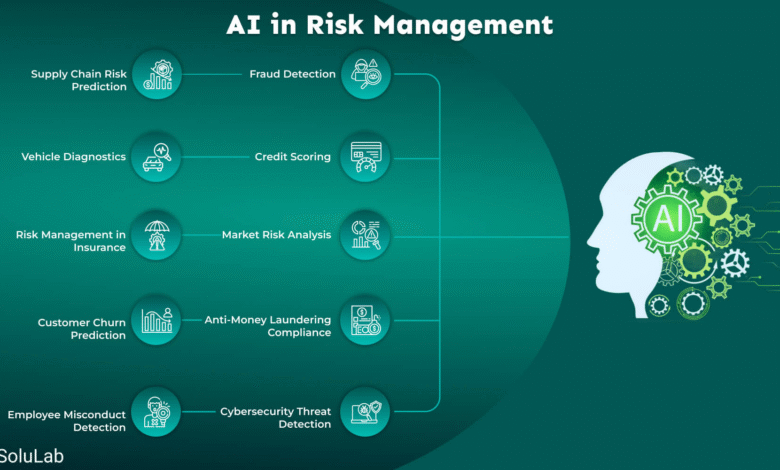AI Business Model Risks: Strains on Companies’ Finances

As the realm of artificial intelligence (AI) continues to expand, AI business model risks are emerging as a significant concern for tech companies and the broader economy. The rapid shift towards AI-integrated operations has led organizations like Microsoft and Meta to embrace an asset-heavy business model, where hefty investments in infrastructure and computing resources are now paramount. This change has triggered a decline in free cash flow, raising alarms about the financial strain these tech giants face as they navigate the complexities of maintaining growth in an evolving market. Even as net income rises, the pressure on cash generation is prompting these firms to reevaluate their AI investment strategies, particularly in light of the increasing costs associated with advanced technology. If these trends persist, the implications for the AI economy impact could be profound, potentially stalling progress and economic contributions from these major players.
The unfolding landscape of AI in business presents a myriad of challenges, often referred to as risks associated with AI-infused business models. Many technology firms are transitioning to resource-intensive frameworks requiring substantial capital outlay, leading to concerns about their operational efficiencies and bottom-line sustainability. As free cash flow declines for notable corporations like Amazon and Alphabet, investors are left questioning the viability of their financial strategies within the shifting AI paradigm. This presents a dilemma for tech companies as they strive to balance necessary investments with the need for profitability, amid growing scrutiny over their AI-driven ventures. Understanding the paradox of soaring profits against declining cash flow is essential for grasping the broader implications of AI’s integration into business practices.
Understanding AI Business Model Risks
The rapid adoption of artificial intelligence (AI) within major tech companies has introduced a host of financial and operational risks that investors need to consider. As firms transition to an asset-heavy business model, which entails substantial investment in infrastructure and computational resources, the potential for financial strain becomes apparent. This shift poses distinct risks to the overall economy, as it could lead to reduced free cash flow—a critical indicator of financial health. Such financial constraints may pressure companies to optimize their expenditures and potentially delay investments in other innovative projects.
Investors should remain alert to the changes in capital allocation as AI technologies evolve. Although the promise of AI has led to substantial net income growth for companies like Alphabet and Amazon, those gains may not reflect the underlying health of their operations. By pouring resources into heavy assets instead of leveraging more traditional intellectual properties, companies may inadvertently expose themselves to potential cash shortages down the line, ultimately risking diminished shareholder returns and broader economic implications.
The Decline of Free Cash Flow in Tech Companies
Recent shifts in the tech industry’s approach to AI have precipitated a marked decline in free cash flow for leading companies. Despite impressive revenue growth, firms like Meta and Microsoft are navigating a complex landscape where their traditional cash generation strategies no longer suffice. In 2023, a decline in free cash flow was reported across several major players, leading to concerns about ongoing investments and long-term stability. This downward trend signals that while companies may harness AI for operational growth, they must also contend with significant financial outlays that could jeopardize their liquidity.
The reliance on capital expenditures to support AI growth strategies poses serious questions for tech firms’ financial resilience. As they allocate increasing amounts of cash towards asset-heavy investments, their ability to generate excess free cash flow diminishes, making it challenging to maintain investor confidence. Furthermore, this decline doesn’t merely reflect the companies’ internal circumstances; it also has the potential to impact the economy at large if these giants can no longer sustain their investments, leading to slower economic growth.
The AI Economy’s Impact on Tech Companies
The current AI boom has significantly transformed the landscape for tech companies, reshaping their investment strategies to accommodate the rise of advanced technologies. Companies are now required to spend heavily not only on AI development but also on the accompanying infrastructure necessary to support these initiatives. The result is a prioritization of asset-heavy business models over the traditional operations that once dominated the tech sector, which brings unique challenges and financial stresses.
As companies immerse themselves in the AI economy, the competitive landscape is changing rapidly. Tech giants are vying for market position through aggressive investments, often at the cost of their previous financial stability. If these investments fail to yield adequate returns in a timely manner, it could undermine their financial health and have ripple effects throughout the economy, raising a pivotal question about the sustainability of such aggressive strategies in the face of mounting operational costs.
Tech Companies Facing Financial Strain
The transition to AI has placed considerable financial strain on tech companies, leading them to abandon their former lean and nimble structures in favor of more complex, asset-heavy models. This shift requires significant capital allocation toward technological infrastructure and resources, which can impede cash flow and profitability. As firms like Amazon and Microsoft continue to invest heavily, they might face challenges in sustaining their operational capacity without compromising shareholder value.
Additionally, as the costs of maintaining cutting-edge technologies rise, tech companies may experience pressures that amplify the financial strain. The traditional expectations of continuous growth may clash with the harsh realities of high capital expenditures, leading to potential restructuring or strategic pivots that impact their long-term viability. This financial strain not only affects individual companies but can have broader implications for the tech industry and the economy as a whole.
Navigating Asset-Heavy Investment Strategies
The shift to an asset-heavy business model requires tech companies to re-evaluate their investment strategies in light of new operational demands. As they channel more resources toward physical assets and infrastructure, the balance between risk and reward becomes increasingly precarious. The long-term potential of these investments must be carefully weighed against the immediate financial pressures that result from decreased free cash flow.
Tech firms must engage in strategic planning to navigate this investment landscape effectively. This includes prioritizing high-impact areas within AI development while ensuring that they maintain sufficient liquidity to weather unforeseen economic conditions. By embracing a diversified investment approach, companies can mitigate the risks associated with concentration in asset-heavy models and create pathways for sustainable growth in the evolving AI economy.
The Role of AI Investment Strategies
In the age of AI, companies must develop robust investment strategies that reflect both the innovation potential and the inherent risks associated with these technologies. Forward-thinking firms are recognizing that traditional investment models may not suffice in the face of significant capital demands from AI ventures. A well-articulated AI investment strategy not only aligns with corporate objectives but also considers the long-term economic landscape influenced by technological advancements.
As tech companies experiment with AI technologies, it becomes increasingly crucial to understand the implications of their investment decisions. By strategically directing capital towards sustainable initiatives rather than solely focusing on asset growth, companies can better adapt to the dynamic AI economy. This balanced approach encourages a healthier financial environment, enabling firms to thrive while safeguarding their operational efficacy amid the complexities of an asset-heavy business model.
Challenges in Securing Investments for AI
The challenges faced by tech companies in securing investments for AI development are multifaceted. As these firms shift toward asset-heavy models, investors may grow wary of long-term returns, especially in times of economic uncertainty. This hesitancy could lead to tighter capital markets, making it more difficult for companies to finance their ambitious AI initiatives. Consequently, this could stall innovation and delay advancements that are critical for maintaining competitiveness.
Moreover, the potential for declining free cash flow could exacerbate these challenges, making it essential for firms to communicate their value propositions and the long-term benefits of their AI strategies effectively. This requires transparency about projected returns and a clear roadmap for how investments will translate into profitable outcomes. Addressing these investment hurdles is crucial to ensuring sustained growth within the sector while navigating the dynamic interplay between financial health and technological advancement.
Impact of Infrastructure Costs on Tech Giants
As tech companies deepen their commitment to AI, they face ever-increasing infrastructure costs that strain their financial resources. The shift to a more complex and capital-intensive operational model requires substantial upfront expenditures for technology and talent, which can significantly impact free cash flow. While these investments are essential for remaining competitive in the AI landscape, they also raise questions about the long-term ability of companies to generate sustainable profits.
Understanding the nuances of infrastructure investment is critical in evaluating tech firms’ performance. As they navigate through rising costs and the need for ongoing innovation, companies may experience fluctuating financial results that can affect their market valuations. Additionally, the struggle to balance heavy spending with cash generation amid evolving market conditions underscores the importance of strategic planning and fiscal prudence in maintaining financial health.
Looking Ahead: AI’s Future in Business Models
As the AI economy contemplates its future, the evolution of business models within the tech sector is paramount. Companies must embrace adaptability and innovation to thrive amid the changing landscape dominated by AI. By cultivating agility in their operations—particularly in how they allocate capital—firms can discover new avenues for revenue generation, even in the face of asset-heavy challenges.
The journey forward for tech companies involves not just the integration of AI but also a thorough reevaluation of financial sustainability amidst market pressures. Emphasizing a balanced approach that marries innovation with fiscal accountability will be essential for fostering growth that meets investor expectations while further advancing technological possibilities. As the market continues to evolve, the ability to pivot strategically will be a defining factor for success in the AI era.
Frequently Asked Questions
What are the potential AI business model risks affecting tech companies’ financial performance?
The primary AI business model risks affecting tech companies include declining free cash flow, as firms transition to asset-heavy models that require increased capital investment. This shift creates financial strain and challenges in maintaining profitability, putting pressure on overall economic stability.
How does the decline in free cash flow signal risks for AI-centric companies?
The decline in free cash flow signals risks for AI-centric companies as it indicates a reduced ability to generate cash after capital expenditures. This could restrict companies’ financial flexibility to invest in growth or weather economic downturns, ultimately impacting their sustainability in the AI economy.
Why are tech companies adopting an asset-heavy business model in the AI landscape?
Tech companies are adopting an asset-heavy business model in the AI landscape to support significant investments in infrastructure, energy, and computational resources. While this model promises growth opportunities, it also poses financial risks as it requires continuous capital allocation and may not guarantee immediate returns.
What is the impact of AI investment strategies on the financial health of tech giants?
AI investment strategies can impact the financial health of tech giants by shifting their revenue generation methods. As these companies invest deeply in heavy assets rather than relying solely on intellectual properties, they may face increased costs that could challenge their profitability and cash flow.
How might asset-heavy business models influence the risks associated with the AI economy?
Asset-heavy business models may increase risks in the AI economy by necessitating large capital investments, which could lead to financial strain during market fluctuations. If these investments do not yield expected returns, it may challenge the economic stability of tech companies and the broader economy.
What are the implications of rising operational costs on free cash flow in the AI sector?
Rising operational costs in the AI sector can significantly reduce free cash flow as companies invest heavily in technology and resources. This trend can hamper their ability to allocate funds for future growth opportunities and could deter investor confidence, creating additional risks to their business models.
What role does time horizon play in assessing AI business model risks?
Time horizon plays a crucial role in assessing AI business model risks as investments may take longer to bear fruit than initially anticipated. Investors might overlook the possibility that substantial capital expenditures could delay profits, leading to a misconception about the viability of AI-centric strategies.
How could a decline in capital investment in AI affect the overall economy?
A decline in capital investment in AI could negatively affect the overall economy by stifling innovation and growth, as many sectors rely on advancements in information processing. Given that a sizable portion of economic growth is linked to technology expenditures, reduced investment could slow down economic progress.
Can companies maintain profitability during the transition to an AI-focused model?
Companies may struggle to maintain profitability during the transition to an AI-focused model due to the heavy upfront investments required. While they could eventually gain from operational efficiencies or new revenue streams, the initial strain on free cash flow and high operating costs present significant risks.
What should investors consider regarding the risks associated with AI business models?
Investors should consider the associated risks of AI business models such as potential declines in free cash flow, the sustainability of heavy capital investments, and the long-term financial outlook for companies adopting these strategies. It’s crucial to evaluate whether the anticipated returns justify the considerable short-term risks.
| Key Points |
|---|
| AI boom leads tech companies to adopt new business models. |
| Free cash flow for major companies like Alphabet, Amazon, Meta, and Microsoft is declining despite rising net income. |
| Transition to ‘asset-heavy’ models requires heavy investments in infrastructure, energy, and computing resources. |
| Investors skeptical about the long-term profitability compared to previous models that relied more on intellectual property. |
| Potential reduction in investment may adversely affect the U.S. economy, impacting growth rates supported by tech expenditures. |
Summary
AI business model risks are becoming increasingly evident as tech companies shift towards asset-heavy models that require significant capital investment. This transition, while aimed at sustaining growth, may lead to declining free cash flow and heightened financial strain on corporations. As companies like Microsoft and Meta invest heavily in infrastructure and technology, the lack of evidence supporting the profitability of such models raises concerns about their sustainability and potential economic impacts. Understanding these risks is crucial for navigating the evolving landscape of AI-driven business strategies.




